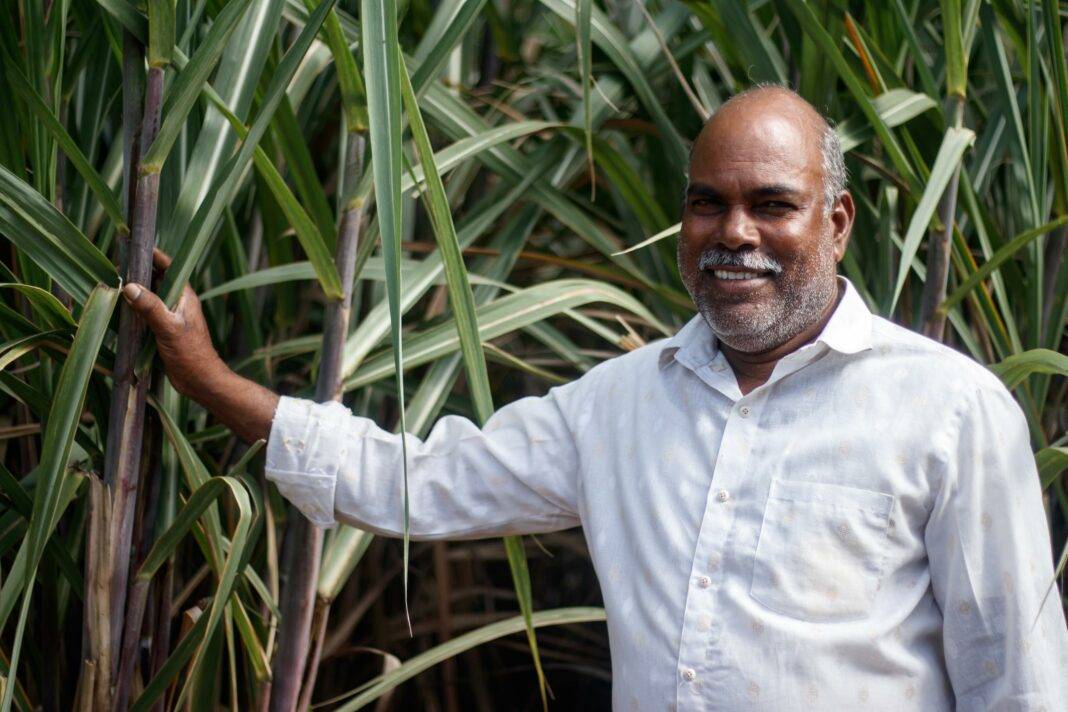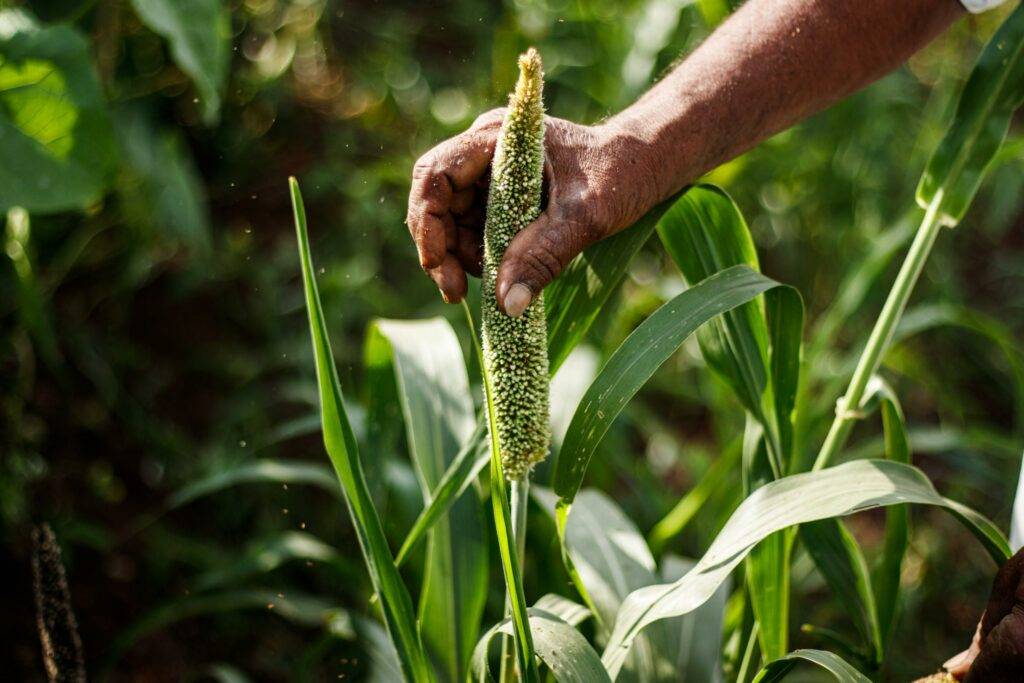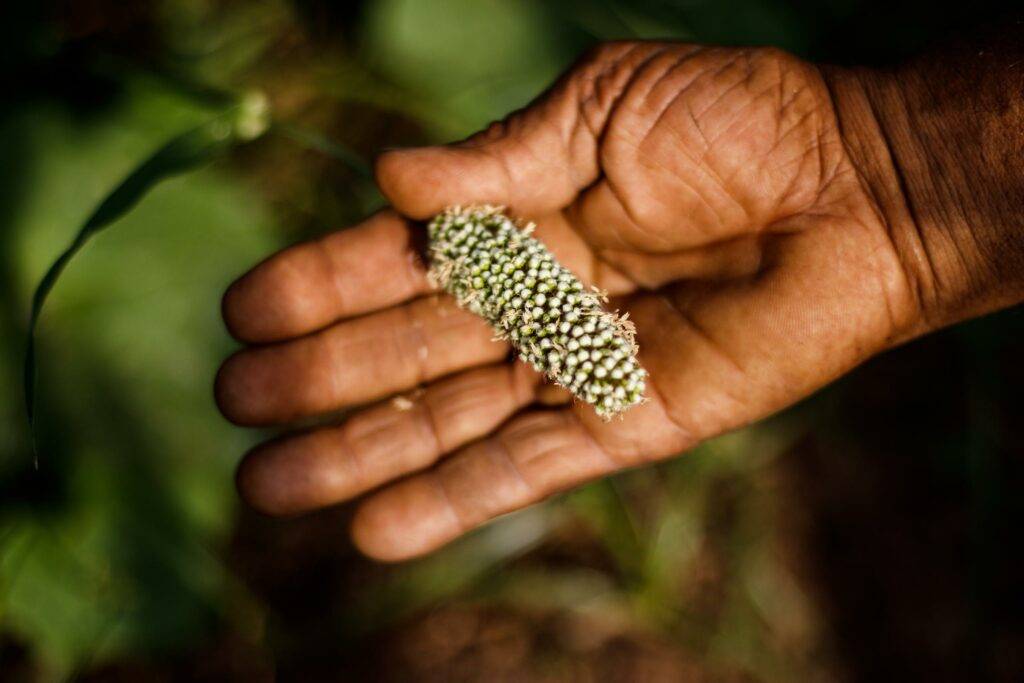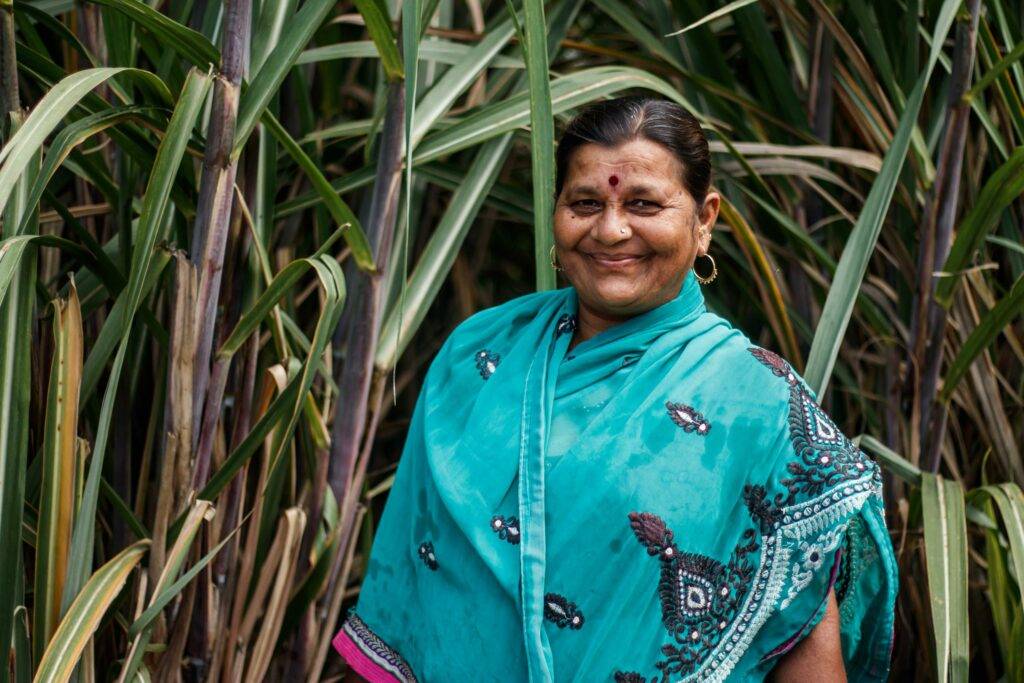Cultivating millets can protect farmers from losing crops to climate catastrophes.
In October of 2022, expected rains destroyed crops on over 2.8 million hectares of farmland — the equivalent of 3.5 million soccer fields — in India’s Maharashtra state. Gajanand Kumbhar, a 52-year-old farmer from Maharashtra’s Bhendavade village, managed not to lose his crops — thanks, he says, to his father.
“For over 100 years, my family has been cultivating indigenous millets,” says Kumbhar’s 82-year-old father, Sambhaji. Though now retired himself, he proudly shares that his grandson, Yogesh, 35, belongs to the fourth generation of farmers successfully preserving traditional millets.
Millets are climate-resilient grains belonging to the grass family Poaceae. Predominantly cultivated in Asia and Africa, millets look like tiny corn kernels. They are inexpensive as well as nutritionally dense, rich in fiber and other vitamins and minerals. But the cultivation of millets is declining in many countries, according to the United Nations — a particularly unfortunate loss since growing millets can address both climate change and food insecurity. Millets can grow in relatively poor soils and under adverse and arid conditions, with fewer inputs (such as fertilizers) than other cereals, reports the UN. At India’s urging, the UN declared 2023 the International Year of Millets. India remains the highest millet-producing country, accounting for forty-two percent of the world’s annual supply. Major millets cultivated in India include sorghum, pearl, and finger millet. For the Kumbhar family, millets have long been a part of their everyday life.
In 1972/73, Maharashtra experienced the worst drought of the previous century, affecting over 20 million people and 5.6 million cattle. “Despite this, our pearl millet survived,” Sambhaji says. Traditional millets are highly resilient — growing in both drought conditions and water-logged soils, withstanding salinity and alkalinity, and resisting pests. What’s more, pearl millet can be cultivated throughout the year. Last year, despite climate fluctuations, the Kumbhar family cultivated pearl millet on half an acre of their two acre farm and harvested 600 kilograms.
In addition to consuming millets themselves, the Kumbhar family feeds millets to its two buffaloes for at least four months every year, says Gajanand’s wife, Bharti. Pearl millet fodder is highly nutritious, and the resulting cattle dung remains an important organic fertilizer for farmers, helping them build sustainable farming cycles.
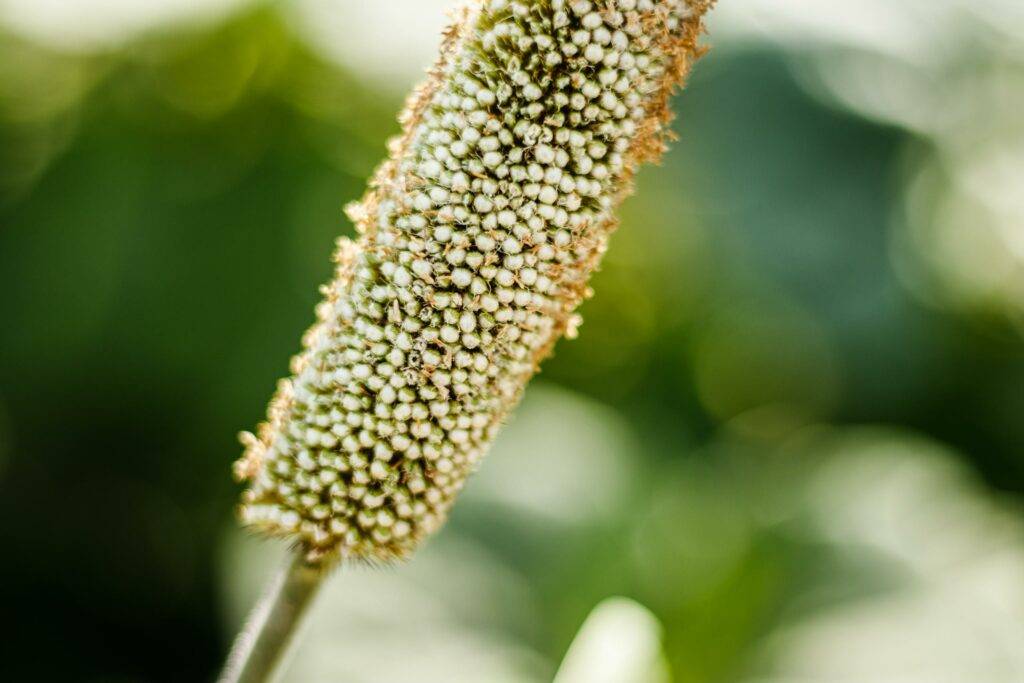
Pearl millet is a nutritionally superior food which also stabilizes blood sugar levels, helping patients with diabetes. Globally, 3.5 billion people remain at risk of inadequate calcium intake, ninety percent of them in Asia and Africa. With rising climate disasters and deteriorating public health, the cultivation and consumption of reliable millet is vital, as it is a rich source of iron, calcium, magnesium, zinc, phosphorous, and potassium. But despite the grain’s considerable benefits, traditional millet cultivation is severely declining. In Bhendavade and the nearby regions, traditional sorghum vanished a decade ago. “Traditional millets have a lower yield and take more time to grow than the hybrids,” says Gajanand.
Several farmers abandoned millet farming altogether and started cultivating better-paying commercial crops like sugarcane. “It’s not affordable to cultivate millets, as it doesn’t fetch a good price like sugarcane,” Gajanand explains. (An acre of sugarcane brings in nearly six times as much revenue as an acre of pearl millet.)
Since 2000, hundreds of biofortified millet varieties have been released in the Indian farming market. Many farmers in Bhendavade have moved towards hybrid millet varieties, and problems have resulted. “Despite their promise, many hybrid varieties couldn’t survive the erratic rainfall,” Gajanand says. Moreover, he notes, the hybrid varieties require chemical fertilizers and pesticides.
The Kumbhar family never shifted. Today, they remain one of the few families in the village who, for more than a century, have kept alive the cultivation of traditional pearl millet. It’s proven to be a wise strategy: just last year, when a majority of Gajanand’s neighbors lost their soybean and groundnut crops to rain, his pearl millet survived.
“The traditional variety is [also] pest resistant. I haven’t reported any pest attack in the past four decades,” says Gajanand, noting that pearl millet doesn’t require either chemical fertilizers or pesticides.
Birds, however, can pose a significant threat. “They love millets, especially pearl millet,” laughs Bharti. “A month before harvesting, we guard the crop daily.”
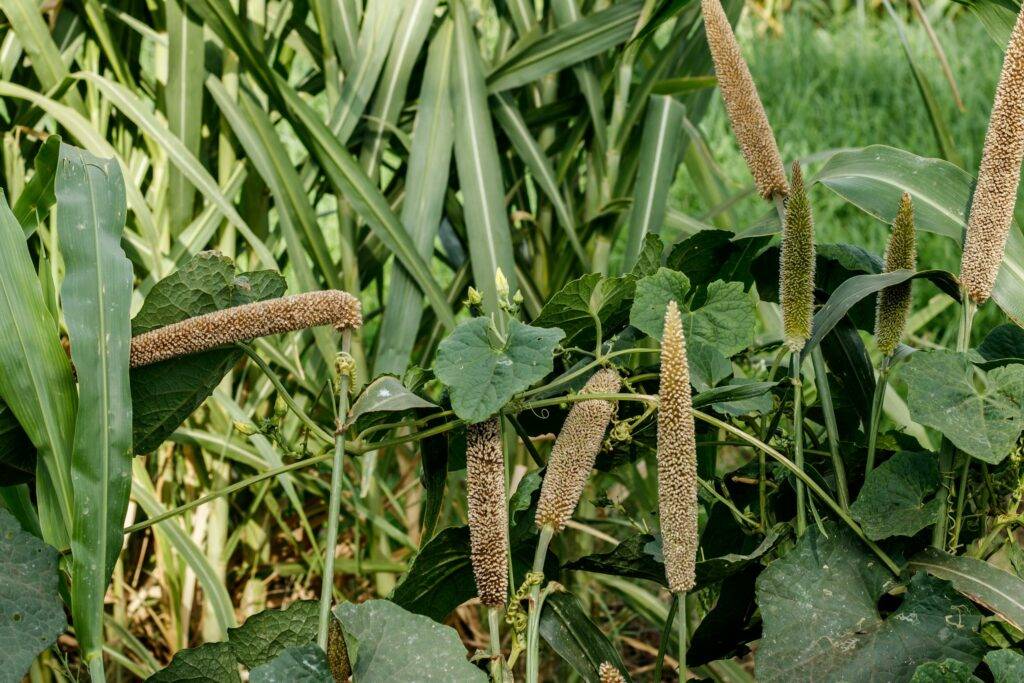

“With rising climate disasters, traditional millets need to be preserved,” Gajanand says, “but the younger generation isn’t interested in it anymore.” He doesn’t blame them, he says. “It’s unaffordable to just cultivate millets.” To boost their income, the Kumbhar family eventually added sugarcane to their crops and stopped cultivating a traditional rice variety, replacing it with more productive hybrid varieties. “But we never abandoned [millet]. If we do so, we will be doing great injustice to future generations,” Gajanand says. And then he adds: “And also to our cattle.”


